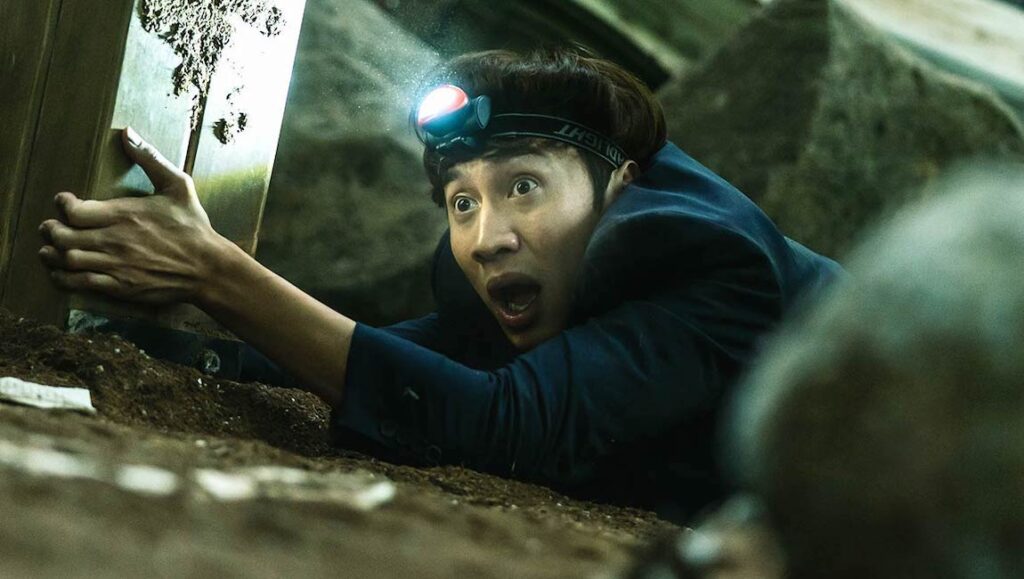Nearly a decade after his previous feature, the 2012 big-budget disaster movie tentpole The Tower — South Korea’s very belated answer to The Towering Inferno — director Kim Ji-hoon returns to the apartment-building-in-extreme-peril genre with Sinkhole, a goofy and super-dumb yet undeniably entertaining commercial product. No prizes for guessing that this film is indeed about a huge hole in the ground, one that opens up and swallows an entire apartment complex, driving it 500 meters underground, along with a bunch of people inside who must work together to survive and escape their predicament.
Kim takes a good 35 minutes or so setting up his characters for the mayhem to come, with an opening sequence that’s visually bland and undistinguished but infused with mildly pleasant comic touches. Office drone Dong-won (Kim Sung-kyun), after 11 years of scrimping and saving, is finally able to buy that deluxe apartment in the sky, straight out of The Jeffersons theme song. A recurring comic motif concerns his frequent encounters with Man-soo (Cha Seung-won), a local jack-of-all-trades who’s seemingly employed by just about every business entity in the area: he works at a gym, a photo studio, and an Uber-esque driving service, as well as being the building’s super, all the while serving as a single dad to a surly, ungrateful teenage son.
Signs of impending disaster arrive early: marbles belonging to Dong-won’s young son roll on the floor by themselves, indicating the surfaces are far from level; cracks begin appearing on the street outside the building; water pressure in the building disappears. And then, just like that, while Man-soo is on the roof conducting inspections, Dong-won and his work colleagues are sleeping off the previous night’s drunken housewarming party, and Dong-won’s wife and son are out shopping, the whole building sinks straight into the ground, far below the street surface, trapping everyone inside. One can’t help but admire how shamelessly Kim piles on the clichés and contrivances, arranging to have most of the principal characters put together into a single space, although Dong-won remains separated from the rest of his family. Although the CGI effects are surprisingly chintzy-looking, considering the advanced technology available nowadays, Kim still effectively creates tension and suspense with the dangerously unstable fallen building, and with torrential rain impeding the rescue team’s efforts to extract the inhabitants. Characters gain resourcefulness and nearly superhuman strength from seemingly out of nowhere, enemies and rivals become close friends, and Dong-won’s shy coworker even gains the courage to let the object of his workplace crush know how he feels. And in a wonderfully absurd touch, the climactic rescue scene functions as an homage to the Beatles’ movie Yellow Submarine.
The ridiculous Sinkhole was a huge hit upon its recent South Korean release, and as of this writing, sits at number one at the domestic box office. The film hints at certain serious concerns, such as affordable housing being out of reach for many citizens, as well the possible cover-up of architectural defects to falsely inflate property values — and, of course, it’s tough not to imbue this with the weight of the recent Surfside condo collapse in Miami — but the film exhibits exactly zero interest in pursuing these narrative strands. Sinkhole promises viewers nothing more than big, dumb, popcorn-chomping diversion, and on that count, it certainly delivers.
Published as part of NYAFF 2021 — Dispatch 5.


Comments are closed.